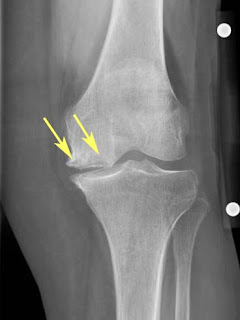
Sources of this stress may include misalignments of bones caused by congenital or pathogenic causes mechanical injury excess body weight loss of strength in the muscles supporting a joint and impairment of peripheral nerves, leading to sudden or uncoordinated movements. Osteoarthritis of the toes may be a factor causing formation of bunions, rendering them red or swollen.ĭamage from mechanical stress with insufficient self repair by joints is believed to be the primary cause of osteoarthritis. In smaller joints, such as at the fingers, hard bony enlargements, called Heberden's nodes (on the distal interphalangeal joints) or Bouchard's nodes (on the proximal interphalangeal joints), may form, and though they are not necessarily painful, they do limit the movement of the fingers significantly. Osteoarthritis is the most common cause of a joint effusion of the knee. As osteoarthritis progresses, movement patterns (such as gait), are typically affected. Osteoarthritis commonly affects the hands, feet, spine, and the large weight-bearing joints, such as the hips and knees, although in theory, any joint in the body can be affected. Some people report increased pain associated with cold temperature, high humidity, or a drop in barometric pressure, but studies have had mixed results. These symptoms would affect their daily activities due to pain and stiffness. A person may also complain of joint locking and joint instability. Osteoarthritis can cause a crackling noise (called " crepitus") when the affected joint is moved, especially shoulder and knee joint. Stiffness is most common in the morning, and typically lasts less than thirty minutes after beginning daily activities, but may return after periods of inactivity. The pain is typically made worse by prolonged activity and relieved by rest. The main symptom is pain, causing loss of ability and often stiffness. Osteoarthritis most often occurs in the hands (at the ends of the fingers and thumbs), neck, lower back, knees, and hips. Osteoarthritis is the cause of about 2% of years lived with disability. Among those over 60 years old, about 10% of males and 18% of females are affected. Osteoarthritis is the most common form of arthritis, affecting about 237 million people or 3.3% of the world's population, as of 2015. An artificial joint typically lasts 10 to 15 years. Joint replacement surgery may be an option if there is ongoing disability despite other treatments. Long-term opioid use is not recommended due to lack of information on benefits as well as risks of addiction and other side effects. Pain medications may include paracetamol (acetaminophen) as well as NSAIDs such as naproxen or ibuprofen. Weight loss may help in those who are overweight. Treatment includes exercise, decreasing joint stress such as by rest or use of a cane, support groups, and pain medications. In contrast to rheumatoid arthritis, in osteoarthritis the joints do not become hot or red. Diagnosis is typically based on signs and symptoms, with medical imaging and other tests used to support or rule out other problems. As pain may make it difficult to exercise, muscle loss may occur. It develops as cartilage is lost and the underlying bone becomes affected. Osteoarthritis is believed to be caused by mechanical stress on the joint and low grade inflammatory processes. Risk is greater in those who are overweight, have legs of different lengths, or have jobs that result in high levels of joint stress. Ĭauses include previous joint injury, abnormal joint or limb development, and inherited factors. Unlike some other types of arthritis, only the joints, not internal organs, are affected. The symptoms can interfere with work and normal daily activities. The most commonly involved joints are the two near the ends of the fingers and the joint at the base of the thumbs, the knee and hip joints, and the joints of the neck and lower back. Other symptoms may include joint swelling, decreased range of motion, and, when the back is affected, weakness or numbness of the arms and legs. Usually the symptoms progress slowly over years. The most common symptoms are joint pain and stiffness.

It is believed to be the fourth leading cause of disability in the world. Osteoarthritis ( OA) is a type of degenerative joint disease that results from breakdown of joint cartilage and underlying bone which affects 1 in 7 adults in the United States. Overweight, legs of different lengths, job with high levels of joint stress īased on symptoms, supported by other testing Įxercise, efforts to decrease joint stress, support groups, pain medications, joint replacement Joint pain, stiffness, joint swelling, decreased range of motion Ĭonnective tissue disease, previous joint injury, abnormal joint or limb development, inherited factors


 0 kommentar(er)
0 kommentar(er)
